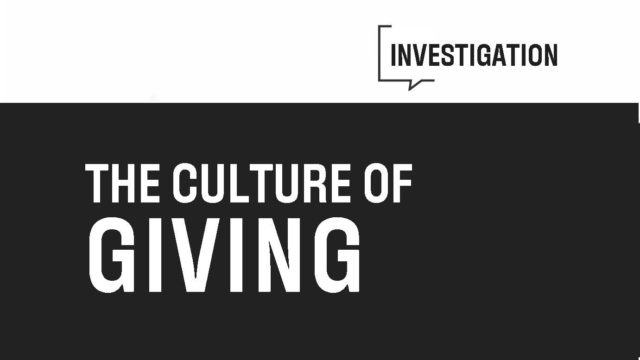The first part of our investigation revealed a tangible malaise in the philanthropic community. Several professionals felt challenged by the question of transparency (and how far to go?), but also with another big question: what are ‘socially acceptable’ means of solicitation?
The results of our little in-house survey are pretty clear: when you make a donation, you want your money to go directly to the cause. It upsets you when you realize that part of your donation goes to fund mailings or (worse) goodies. Here are some of you comments:
“I find it insulting and it doesn’t encourage me to donate, I feel like I’m being tricked. I don’t think it’s an honest way of doing things, it’s a campaign of pressure.”
“In general goodies are cheap. It adds to my feeling that it’s inappropriate: I don’t expect anything in return for the generosity. (…) I have noticed a growing tendency for giving towards utilitarianism, give and take. Why not win-win while we’re at it?”
“I don’t like that. I feel like my donation is being used to make more solicitations, and the money is not going to the cause I wanted to support.”
90% of you felt that sending goodies is a waste or a misuse of the money donated to an organization. As for mail campaigns in general, 47% of you felt that organizations that solicit your donations should no longer use them (39% would like them to cease completely, but suspect that our society is not quite there yet…). And you are not sympathetic when an organization uses a solicitation tactic you don’t like: more than half of you will simply stop supporting them. Only one in three (33%) will take the time to let the organization know that you are unhappy.
To discuss these results, Porte Parole met with Daniel H. Lanteigne, President of the Quebec chapter of the Association of Fundraising Professionals (AFP), Senior Consultant at BNP Philanthropic Performance, and Lecturer in the Philanthropic Management program at the Université de Montréal.
Puzzle #1: Maximizing impact… without spending too much
Mr. Lanteigne is not surprised by these results. “It’s clear to me that every donor wants their money to make an impact. But what do we mean by impact? For me, paying the salaries of the people who make the cause possible is impactful. But for some people, salaries are administrative costs.”
Charities have long grappled with this squaring of the circle: the lower their administrative costs, the greater the share of their expenses devoted to “impact.” Mathematically, this sounds good. But in practice, does it really constitute a greater impact? Not necessarily.
Daniel H. Lanteigne explains: “All organizations are facing donor attrition, contributed to by the natural aging of the population. In order to combat this, they have to invest a bit (buying lists, launching mailing campaigns and maybe even including some goodies). However at the end of the year, in the annual report, these investments were money spent on something other than the direct impact… Of course, when receiving a goodie, a long-time donor may think that it is a waste of money. But that same gesture may have attracted a new donor who will give $500 for several years.”
“Of course, when receiving a goodie, a long-time donor may think that it is a waste of money. But that same gesture may have attracted a new donor who will give $500 for several years.” – Daniel H. Lanteigne
This kind of investment seems normal and even obvious when it comes from a private company, but let’s face it: we have a harder time accepting it from charitable organizations.
Puzzle #2: Adapting to new generations
Unfortunately, the demographic curve makes things even more difficult. With the gradual disappearance of a generation that not only had more major donors, but also more loyal donors, organizations have no choice but to invest more effort (and money) into raising the same funds.
“Philanthropy at large has to rethink its mechanisms and traditional approaches,” says Lanteigne. “In the old days, for a big campaign, you’d find two or three executives from big companies, they’d pull out their Rolodex [a directory of the pre-digital era], make a few calls and manage to raise millions. Today, what we’re seeing is that although our young entrepreneurs are similarly extraordinary leaders, they’re not always able to achieve the same financial goals.”
“Philanthropy at large has to rethink its mechanisms and traditional approaches.” – Daniel H. Lanteigne
Is it a decline of the young entrepreneurs’ influence? A waning culture of giving? Is it the current state of the economy? A greater distrust of organizations? One thing is certain, the reality has changed and the philanthropic community must take this into account if it does not want to hit a wall.
Puzzle #3: Getting donors interested in charities’ realities
Between “wanting my contribution to go directly to the cause” and “reading a foundation’s annual report for reassurance”, let’s be honest, we lose a lot of people along the way. How many of you scrutinize the numbers published by the organizations you give to? (We asked ourselves this at Porte Parole: on the internal team, literally nobody does…)
Lanteigne says there is no hard data showing how many donors do read annual reports. But he thinks everyone would benefit from a better understanding of the philanthropic ecosystem. “Often, only some journalists look at the numbers to take a critical look at the sector,” he says. “Every year, articles are published about a disastrous fundraising campaign or a CEO’s salary that is too high… And that’s fine, it’s the journalists’ job to ensure vigilance. But at the same time, each article chips away at the donors’ trust, without them necessarily understanding better how a charity works.”
To strengthen trust in organizations, AFP has published a Donor Bill of Rights, in which the first three points deal with the information an organization should disclose to its donors. But what if donors aren’t interested?
Puzzle #4: Defining transparency
According to Daniel H. Lanteigne, the ball is in the charities’ court. It is up to them to establish a dialogue with their donors to better understand them and adjust their communications accordingly. “The entire philanthropic sector must work on educating donors. Because everyone wants their money to be spent on impact. But if no one is funding the salaries, the rent, the heat and the copier, an organization can’t function, we close up shop.”
“Everyone wants their money to be spent on impact. But if no one is funding the salaries, the rent, the heat and the copier, an organization can’t function, we close up shop.” – Daniel H. Lanteigne
So AFP urges its member organizations to be transparent and make as much information available as possible. Unfortunately, there is no standard way of presenting expense reports and it’s confusing for the donor. Take the example of a benefit event: some reports will talk about net income, others about gross. Some will include human resources, some will not…
So when we talk about “transparency”, what exactly are we talking about? Mr. Lanteigne recognizes that this is a thorny issue and advocates for the introduction of common guidelines for the entire philanthropic community. But it’s a huge undertaking and consensus will not be easy to find.
“Organizations need to get back to basics. Plans and strategies are great, but are they listening to their donors? Do donors have a channel to talk to them? Are they surveying their donors to get to know them better and ensure tailored-made solicitation, but also to find out their interests and motivations for giving?”
It’s up to organizations to generate that dialogue, or at least to create the conditions that make it possible.
Back to the investigation page.




